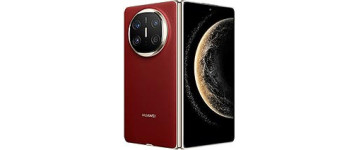

Samsung’s Rumored Galaxy Z TriFold Promises to Be an Impressive Foldable
Huawei stole the spotlight this year with the Mate XT. Its tri-folding design offers a distinct advantage over conventional foldables, and after spending ample time with the phone, it’s remarkable how natural it feels for daily use. Initially, I assumed it would serve more as a tech showcase than an actual device, but that’s far from the truth — the Mate XT functions perfectly as a daily companion, and I’ve utilized it extensively. The ability to unfold the phone into a tablet-sized display is simply incredible, and the excitement of that feature remains fresh.
With Huawei setting the pace, it’s no surprise that other companies are eager to join in. Samsung is expected to unveil its own version of a tri-folding device called the Galaxy Z TriFold, and with rumors hinting at an upcoming launch, here’s what I hope to see from this phone.
A Design That Is Not Awkward
Samsung has successfully revamped the design of its foldable devices with the Galaxy Z Fold 7, and I wish the tri-folding model mirrors this aesthetic. The Z Fold 7 is enjoyable to hold and use due to its elegant design, making a noticeable improvement over the Z Fold 6 and earlier versions. It feels just as light and slim as the Honor Magic V5 and Vivo X Fold 5, and it wasn’t until I compared the Fold 7 with the Pixel 10 Pro Fold that I appreciated the substantial difference this year.
Huawei is well-known for its sleek products, and the Mate XT exemplifies this; the tri-folding device measures only 4.8mm when fully opened, and this slimness is crucial for its modern appearance. Samsung must achieve similar thinness with its tri-folding device. With the Z Fold 7 weighing in at 215g and a thickness of 4.2mm, that’s an excellent benchmark, and I want Samsung to utilize this foldable as the foundation and enhance that design.
Cameras That Can Compete with the Mate XT
Samsung upgraded the Z Fold 7 with an essential 200MP camera enhancement this year, enabling the foldable to capture significantly improved photos and videos. The Galaxy Z TriFold must incorporate the same cameras to stand up not only to Samsung’s standards but also compared to other foldables.
While I was initially uncertain about Huawei’s camera capabilities with the Mate XT, its tri-folding device proved to house some of the finest cameras in its class. The Mate XT consistently delivers impressive photos and videos, and I’ve never felt restricted by the camera quality on this device.
Despite foldables being primarily about increased display space, the potential price of over $3,000 for the Galaxy Z TriFold necessitates exceptional cameras — it’s essential. Samsung has demonstrated its capability in this domain this year, and we will have to watch and see if it can replicate that success with its tri-folding offering.
A Battery That Endures the Whole Day
There’s a lot to appreciate about the Galaxy Z Fold 7, yet one ongoing frustration is its battery life. The foldable features a modest 4,400mAh battery, and while it holds up for a full day with moderate usage, I often find myself needing to charge it before the day’s end.
Most other foldable devices come equipped with at least a 5,000mAh battery, with Samsung being noted for its conservative approach in this aspect — even Google opted for a larger 5,015mAh battery in the Pixel 10 Pro Fold this year. All this indicates that the Galaxy Z TriFold should have a larger battery to compete effectively with the Mate XT.
However, that may not actually be the reality; leaks suggest that the tri-folding device could utilize the same 4,400mAh battery as the Galaxy Z Fold 7, and if that ends up being accurate, it will be disappointing.
A Foldable I Truly Want to Use
Another frustration with the Z Fold 7 is its tendency to wobble when used on a desk. The leaner design and the switch to larger camera sensors result in the rear cameras protruding slightly more than in previous models, and since Samsung maintained the camera module’s position, the foldable tends to rock significantly.
Huawei and various other Chinese manufacturers address this concern through a center-mounted camera island, and Samsung should consider this approach. It’s unlikely that the Z TriFold’s design will deviate significantly from the Z Fold 7, but regardless, I desire a phone that remains stable on my desk without constantly shifting around.
Substantial Software